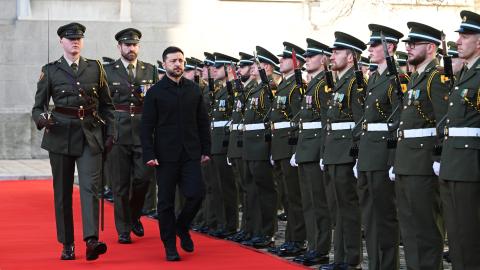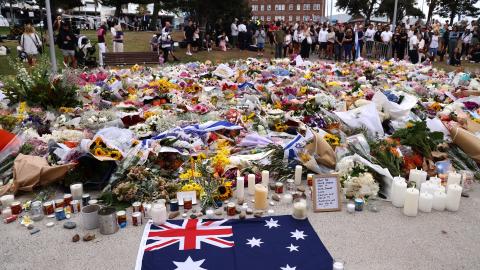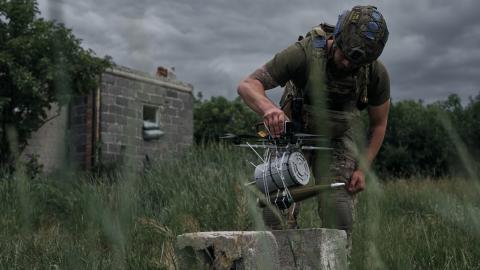Executive Summary
- Battlefield assessment: Ukraine’s defense remained persistent, and Russia continued to suffer heavy losses for minor territorial gains.
- Russian drones using Western AI: Russia has reportedly introduced a new Shahed drone variant that is augmented with artificial intelligence technology from leading Western companies.
- Russia boosts high-end missiles: Russian Kh-101 air-launched cruise missiles now carry cluster warheads, boosting their destructive power.
- Moscow-Pyongyang cooperation: The Ukrainian government estimated that Russia now receives over 40 percent of its artillery rounds from North Korea.
1. Battlefield Assessment
Open-source intelligence revealed no drastic changes on the battlefield last week. Ukrainian forces’ persistent defense continues to inflict high costs on the Russian military.
Russia has suffered a staggering number of casualties in Ukraine. Since Moscow’s full-scale invasion in 2022, more than one million Russian servicemen have been killed or wounded. This includes more than 236,000 in 2025 alone.
Currently a massive forceof 700,000 Russians is serving in Ukraine. Each day Russia loses more than1,000 servicemen, equivalent to a battalion. Additionally, Russia receives considerable defense industrial support from its partner in Pyongyang. According to Ukraine’s military intelligence service, up to 40 percent of the artillery rounds Russia uses come from North Korea.
Despite Moscow’s numerical advantages, Kyiv’s defensive efforts have proven resilient. The Russian military has managed only slow, grinding progress. Russia is maintaining its offensive footing, but at a growing cost in lives and treasure.
Pokrovsk and Toretsk remained major flashpoints. Combat also escalatedin the Vovchansk sector and in the directions of Orikhiv, Lyman, and Kupiansk. The battlefield is becoming increasingly complex, with aerial bombardment remaining intensive. The Russian defense industryis boosting its drone production, prompting Ukraine to experiment with new drone-hunting robotic warfare assets. Moreover, the Russian Aerospace Forces now possess a new, cluster warhead–equipped variant of their most widely employed air-to-ground munition, the Kh-101. This potent munition further complicates Ukraine’s air defense challenge.
2. Russia Reportedly Uses Western AI in New Shahed Drones
Russia has reportedly produced a new variant of the Shahed-136 loitering munition, the MS001. This variant boasts autonomous combat features, artificial intelligence–enhanced target acquisition capabilities, and smart navigation systems.
Ukrainian forces downed one such drone over Sumy Oblast in June 2025. Ukrainian military officials have called it a “digital predator” for which the country’s air defenses were not prepared. Available information suggests that the MS001 is a swarming asset and possesses advanced data-sharing capacity that can enhance its flight paths and target sets.
More importantly, several writings suggest that the MS001 operates using NVIDIA’s Jetson Orin supercomputer. The palm-sized computer boasts an impressive 67 trillion operations per second (TOPS), a metric that measures the processing power of AI chips. It runs powerful generative AI models, such as vision transformers, vision language models, and large language models.
Ukrainian officials report that the drone can process thermal imaging, telemetry and object-recognition data, and decision-making algorithms. Therefore it can operate in heavily contested electromagnetic spectrum environments. Ukraine’s Main Directorate of Intelligence (GUR) found that the drone possesses a video encoder that converts analog camera feeds into a high-definition digital stream. Such a configurationsuggests that the munition could use real-time data cueing during flight for intelligence and target acquisition.
Reporting in 2024 indicated that Russia had secured Dell servers equipped with advancedNVIDIA artificial intelligence chips through a Mumbai-based Indian pharmaceutical company. But the Kremlin’s use of Western systems is not limited to one company or product. Most of Russia’s advanced weaponry relies on Western systems and subsystems, particularly microprocessors. The Iranian Shahed baseline also employs multiple foreign components, including some produced by Texas Instruments and other American firms. Hostile nations have established global smuggling schemes to circumvent American export control regimes and sanctions, often through end-user fraud.


















